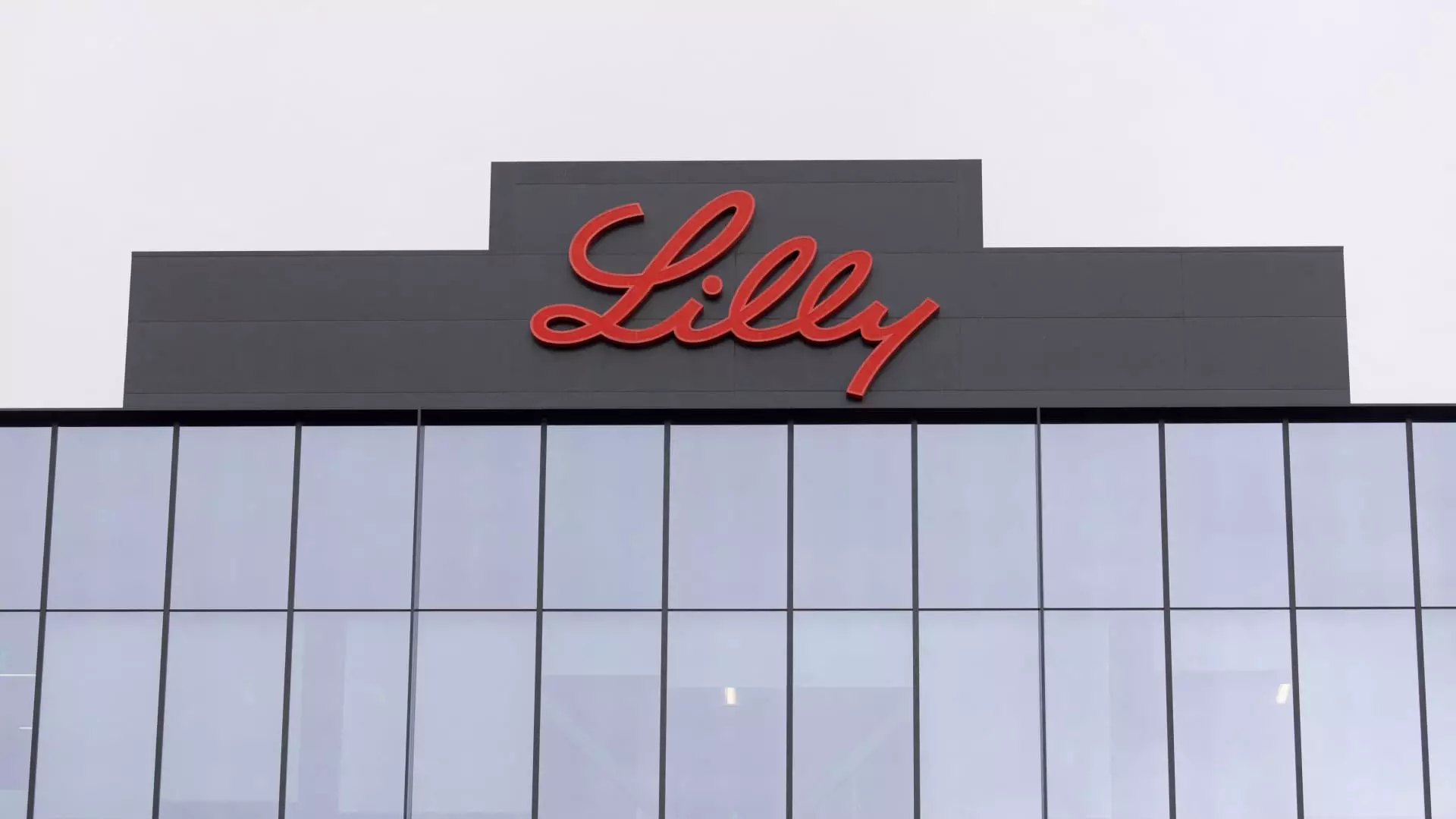In the fast-paced environment of financial markets, midday trading can often create opportunities for keen investors to gauge performance and make informed decisions. As we examine the day’s top movers, it becomes apparent that a mix of positive and negative sentiments is influencing stock prices across various sectors. In this analysis, we will explore the key companies making headlines, their market movements, and the implications of these shifts on investor confidence and future outlooks.
Eli Lilly, a powerhouse in the pharmaceutical industry, saw its shares plummet by over 7%. This significant drop followed the company’s announcement regarding its revenue projections for 2024. Initially anticipated between $45.4 billion and $46 billion, Eli Lilly now expects revenues to reach approximately $45 billion, a marked decrease that indicates potential weaknesses in market demand for its acclaimed weight loss and diabetes medications. Such downward revisions raise questions about the sustainability of growth in the current healthcare landscape, especially as competitors continue to emerge. The market’s reaction reflects broader concerns about the future, particularly given the increasing scrutiny on pricing and healthcare regulations.
In another sector, Boeing’s shares fell slightly by more than 2%. The aerospace giant reported a staggering 348 airplane deliveries for 2024, which is approximately a third less than the previous year. This performance starkly contrasts with Airbus, whose deliveries reached an impressive 766 units. Such disparities signal potential challenges for Boeing, whether stemming from supply chain disruptions, regulatory hurdles, or waning market demand. Investors may be cautious as they weigh Boeing’s ability to rebound and close the widening gap with its rival, underscoring the volatile nature of the aerospace sector.
Conversely, Applied Digital emerged as a key gainer with a remarkable increase of over 6%. This surge followed news of a substantial investment from Macquarie, amounting to $5 billion, which will grant the firm a 15% stake in Applied Digital’s high-performance computing (HPC) division. The growing interest in artificial intelligence infrastructures particularly resonates with market trends favoring advanced technologies. The partnership adds credibility to Applied Digital’s efforts and can significantly enhance its capabilities, potentially positioning it as a serious player in the AI arena.
The retail landscape displayed stark disparities as Signet Jewelers, the owner of popular brands like Kay Jewelers and Zales, suffered a staggering drop of 26%. The company’s decision to lower its fourth-quarter guidance is largely a response to dismal holiday sales, reflecting a shift in consumer behavior towards more affordable price points. This trend may signal a broader economic shift, where inflation and changing purchasing power force consumers to rethink their spending habits. The implications for Signet could be profound, requiring strategic adjustments to their marketing and pricing strategies to regain market traction.
In sharp contrast, KB Home celebrated a 3% rise in its stock after reporting a successful fourth-quarter earnings beat. The company’s per-share earnings of $2.52 surpassed analyst expectations, along with revenue figures that outpaced earlier forecasts. As consumers increasingly seek housing solutions, KB Home appears well-positioned to navigate the ever-evolving real estate market. Their ability to harness demand can serve as a stabilizing factor in a fluctuating economy.
One of the most striking movements came from H & E Equipment Services, which skyrocketed over 105% following the announcement of its acquisition by United Rentals for $92 per share. This transaction, valued at approximately $4.8 billion, illustrates strong demand in the equipment rental market and reflects a strategic consolidation move within the industry. United Rentals’ also registered a modest rise, indicating investor confidence in the acquisition’s potential to yield synergistic benefits.
The dynamics of midday trading reveal a tapestry of hopes and hurdles faced by prominent companies. Investors are constantly navigating this complex landscape, with some companies experiencing substantial gains while others grapple with disappointing forecasts. As we look forward, understanding these shifts will be crucial for making informed investment decisions. The current indicators suggest that while certain sectors, particularly digital technology and construction, show resilience, others, like pharmaceuticals and retail, must adapt strategically to the changing market environment. The interplay between these factors will continue to shape the outlook for investors in both the short and long term.

